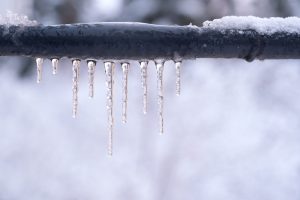If you’ve found yourself asking, “How do I fix a clogged drain?”, it’s probably time to talk to someone about professional snaking and hydro jetting services. Choosing the best drain cleaning method can save time, prevent damage to your plumbing, and restore full flow quickly.
Many homeowners try chemical cleaners like Drano, but those products can harm pipes and often fail to clear stubborn grease and debris. Professional hydro jetting services use high-pressure water to scour pipes from the inside out, while drain cabling, also known as snaking, mechanically breaks up blockages.
What is Drain Cabling?
Drain cabling or snaking involves inserting a flexible metal cable, called an auger, into a clogged pipe. The cable advances past the trap and curves to navigate bends. At the cable tip is a cutting head designed to break up hair, soap scum, roots, and small food particles. As the operator turns the cable handle, the head cuts through the obstruction and pushes debris downstream to restore water flow.
How It Works
Technicians use handheld augers for sinks and toilets and powered drum machines for larger or deeper blockages in main lines. Handheld augers typically reach up to 25 feet while drum machines feed cables more than 100 feet. The technician feeds the cable into the pipe, applies steady pressure, and rotates the drum to shear away blockages. Once clear, the line is flushed with water to remove any remaining debris.
When Drain Snaking Is Most Effective
Drain cabling works best for small to moderate obstructions caused by hair, soap buildup, paper products, or food scraps near the fixture. It is ideal for bathroom sinks, shower drains, and kitchen sinks. Snaking is quick, cost-effective, and does not use harsh chemicals. If grease has built up deeper in the line or tree roots have invaded the pipe, a more thorough method, such as hydro jetting, may be required.
What is Hydro Jetting?
Hydro jetting uses a specialized nozzle attached to a high-pressure hose. A professional connects the hose to a truck-mounted water pump that generates thousands of pounds of pressure per square inch. The technician feeds the hose into the pipe and then purges the line with a powerful stream of water. This blast of water removes grease, scale, mineral deposits, and small tree roots. The same water both scours the pipe walls and flushes debris downstream, restoring full flow and clearing even stubborn blockages.
Advantages of Hydro Jetting Over Chemical Cleaners and Snaking
Hydro jetting removes buildup that snaking cannot reach because it cleans the entire pipe diameter rather than just cutting a hole through the clog. It also avoids the risks of corrosive chemicals that can erode seals and joints over time. Since it does not rely on caustic agents, there is no risk of harmful residues that can damage fixtures or harm septic systems. Hydro jetting fully restores pipe performance by delivering a complete clean instead of a partial opening.
A Look at the Effectiveness & Limitations of Each
Types of Clogs Each Method Handles
Drain snaking works well for hair clogs in bathroom drains, food scraps in kitchen sinks, and small foreign objects. It is a fast solution for light to moderate blockages near the fixture. Hydro jetting excels at clearing grease and soap scum that has built up deep in the line, removing mineral deposits in hard water areas, and cutting through small root intrusions. For main sewer lines or long runs of pipe, hydro jetting provides a thorough clean that prevents future backups.
Safety Considerations and Chemical Use
Home chemical products such as Drano often contain sodium hydroxide or bleach. These chemicals can burn skin and damage PVC or metal piping over prolonged exposure. They also pose a hazard to septic tanks and wastewater treatment systems.
Hydro jetting uses plain water under controlled conditions, so there are no harmful residues left behind. Technicians wear protective gear to manage high-pressure water safely, and they follow strict protocols to avoid pipe damage. Always consult a professional to choose the safest and most effective solution for your plumbing.
Choosing the Right One for Your Home
Selecting the best drain cleaning approach depends on the type of pipes you have, the severity of the clog, and your budget. For small blockages near fixtures, snaking is quick and cost-effective. If you have hard water that leaves mineral scale, persistent grease buildup, or recent root intrusion, hydro jetting offers a deeper clean that restores full pipe diameter.
Older cast iron or clay pipes may require inspection before high-pressure water is used to avoid damage. Rooter MD evaluates your system with a camera inspection and recommends the method that delivers reliable, long-lasting results.
Trust Rooter MD for Professional Drain Cleaning
When you need a lasting solution for slow drains and stubborn clogs, trust the licensed technicians at Rooter MD. We offer both drain cabling services and professional hydro jetting services to meet every challenge.
Our team arrives with state-of-the-art equipment, inspects your line to diagnose blockages, and applies the optimal cleaning method. With transparent pricing, expert workmanship, and clean-up included, you can enjoy free-flowing drains without harsh chemicals or repeat service calls.
The Leader in Michigan Hydro Jetting
If you need hydro jetting or professional help snaking a drain, call us today at 248-888‑7777 or start a conversation with us online. We serve homes throughout the Detroit metro area with fast, effective drain cleaning and complete plumbing solutions.




